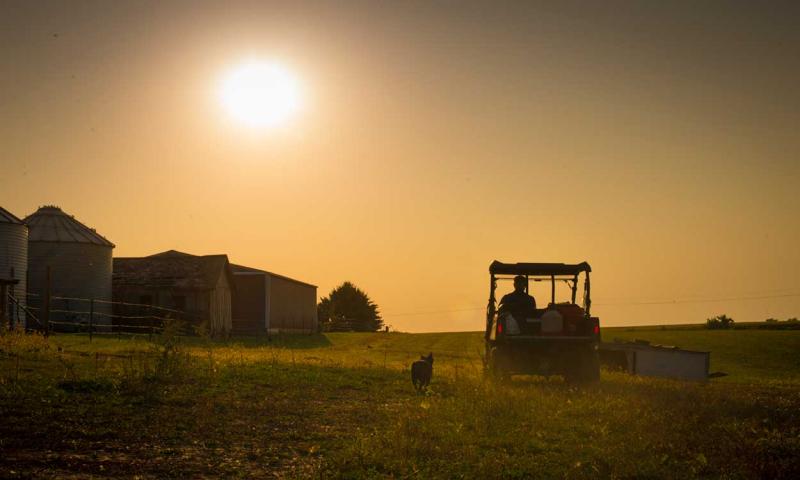
Pasture and rangelands are much more complex systems than monoculture crop fields. Often, management advice for chemical application in cropland is ‘adopted’ for range and pasture without enough consideration for managing the unintended consequences on of desirable plants. In a pasture setting, we must consider a few additional factors. First, avoiding chemical applications on native plant communities is always preferred. Landowners and managers should also consider if their own management systems are the underlying driving factor of persistent weed issues. Seeking outside advice from trusted producers or professionals is a good first step. There is no value in expending money and effort on chemical control if a producer has to repeat the process over multiple years due to a management system that promotes weeds.
The Science
Biologically, fall is a good time to kill plants with chemicals due to the plants transferring resources to the roots. Applying herbicide while this process is active in the plant allows the plant to ‘take up’ the chemical into the roots and cause damage or death. This is the easy part. The more complex part is determining if, how, when, and what to apply to the target plant(s) to minimize impact toits neighbors. Some general considerations are discussed below.
Know the Plants
Before investing in chemicals, understand the biology and potential value of the targeted plant. Many species can be grazed or mechanically controlled if the timing is right. Mode of control really should be considered throughout the growing season. Biennial weeds can often be controlled mechanically, and noxious weeds can sometimes be controlled with modifications to the grazing system. In many cases, modifying management to create additional competition can also be effective. If chemical application is deemed necessary, consider the following.
Understanding Timing
While fall is a good general time to target plants with chemicals, it will also impact non-target species potentially creating more opportunity for undesirable plants to persist. There are too many potential chemical, timing, and weather scenarios to cover in a short article, but a general rule of thumb is to wait until mid to late fall or after the first frost to target common problem species, such as Canada thistle or leafy spurge. The concept is fairly sound in that these species often actively re-grow in the fall and can persist after a light to moderate freeze while most native plants tend to shut down their biological activity once cooler whether persists. However, in reality, the plant community and local weather conditions can create complexity in timing chemical applications. Managers should physically visit the site to ensure that native plants are truly done growing (no green leaves or stems). However, another key point to consider, is if frost comes late in fall, itmay not be worth spraying because there may not be enough warmth in subsequent days for the chemical to be actively taken in by the target plants.
Application Process
Targeted, precise application in the form of spot-spraying in pasture and rangelands is nearly always preferred when applying chemicals. Broadcast spraying over larger areas can lead to a great deal of non-target impact on native plants and can potentially increase the weed problem in subsequent growing season.
Understand the Chemistry
Seek the correct information when choosing the chemical and timing. Consider the following and seek advice:
- Is the timing right?
- Will I truly achieve my objective?
- Have I considered all alternatives?
- Have I considered economic return in this investment?
- Will the chemical I’ve chosen persist in the soil, and what negative impact might that have on my desirable plants?
Noxious weed control is often a long-term process. We suggest if there is any doubt, seek a site visit from a trained rangeland professional. In some cases, chemical application may be deemed necessary, but it should always be considered in the context of appropriate management and an integrated best management framework that considers all options and opportunities to control input expenses while improving the natural health, vigor and resilience of the native plant community.

